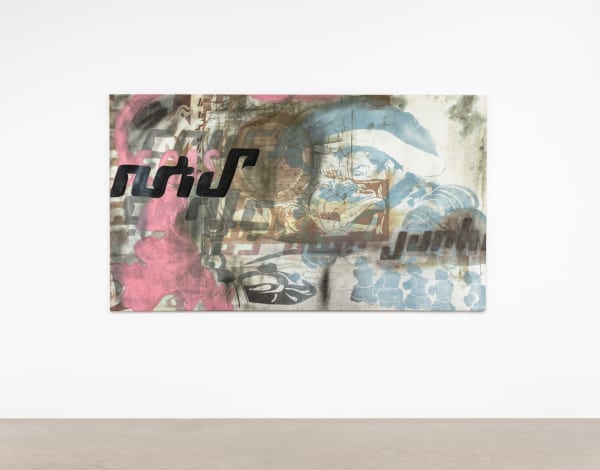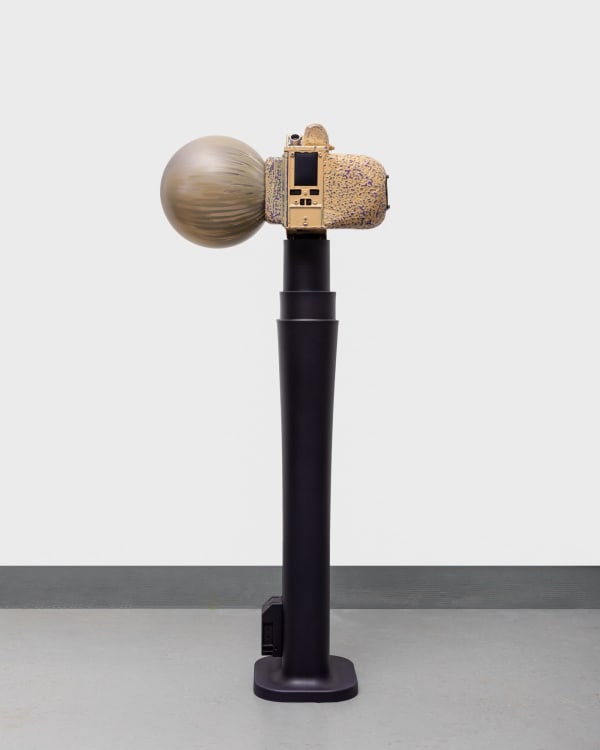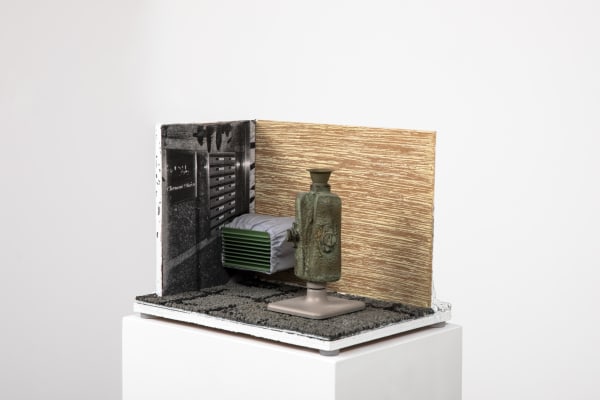Erwan Sene: Zona Gargantua
Zona Gargantua
curated by Pierre-Alexandre Mateos and Charles Teyssou
Balice Hertling is excited to present Erwan Sene’s first solo exhibition, titled “Zona Gargantua”. The show introduces several sculptural and graphic works that may also function as sound pieces. Composed of various objects found in the streets of Paris, Erwan Sene’s sculptures appear seemingly forbidden or mute. Molded and enrobed in various distinct textures, dressed and undressed, these ruins are the object of an apparent undoing. The works resemble the urban furniture from an imaginary of Paris during the Glorious Thirty (1945 - 1975), a time in which the city’s obsession with modernity meant its spirit was incorporated in its every feature, from public toilets to Roissy-Charles de Gaulle. But here, the lamp posts, vespasiennes, and station latrines seem to have been extracted from the depths of the city. In reality, they have been reworked to compose a grotesque geography, as if the 14th century French humanist Francois Rabelais had been a video game designer: “Zona Gargantua”, his last foray in the industry, is set in a neo-medieval Paris where all the textures are added in stained strata. Mechanized protuberances and devices in the process of digestion blink to the sound of salesmen's secret jibes.
Like decor salvaged from an abandoned amusement park, the works are derived from the artist’s refusal of their would-be destinies as landfill. The sculptures are then clad in various glazes and crusts, emulating a state of advanced obsolescence. These marginal objects also produce sound and thus are able to communicate. They speak the language of the catacombs, clinking like old, lost toys in morse-code. Like a sewer-system murmuring in digestion, they whisper in a dialect resembling louchebem or the vocabulary of seedy bars, much like the slangs celebrated by the situationist muse, Alice Becker-Ho, in The Princes of Jargon (1995). It takes time to unearth and decode the city’s sonic undercurrents and it is the entire anatomy of "Zona Gargantua" which sings and performs this vitiated concert. These sounds are replicated in Sene’s forthcoming album, JUnQ, which will be released in March of 2023 by the Berlin-based label, PAN.
Rabelais’ giant, Gargantua, on the poster by Georges Rippart (1871-1935), presides over the city, pissing on Parisians from the roof of Notre-Dame. As in a pagan baptism, the son of Gargamelle recites the words of the Gospel, monopolized by a few clergymen. Beyond Medieval notions of mud and ash, Sene’s works refer to a universe in the process of technological decomposition. His Paris of the low-lands is an abstraction and restoration of a state of digital abyss. PMU, manhole covers, grey windswept palisades, intoxicated birds, and cemeteries make up “Zona Gragantua”, an artificial paradise at the intersection of Subure (Rome) and Kowloon (Hong-Kong).
In this show, the sculptures seem to shelter colonies of rats and oil-slicked pigeons. The bas-reliefs are those of a nightmare from Mirapolis, the forgotten and obliterated amusement park dedicated to Rabelais once located on the outskirts of Paris. Other sculptures are reminiscent of Tetsumi Kudo’s plastic-atomic experiments or the interfaces of Tishan Hsu’s machine-bodies. The models displayed in the basement of the gallery are in themselves like feverish miniature theaters. In the “Zona Gargantua”, no one speaks the same language but everyone understands each other, everything has a stench but there is no smell, nothing is clean yet all is completely sterile. “Zona Gargantua” is what happens to Paris when you remove its successive layers of botox: “Under the paving stones, the collagen!”.
Pierre-Alexandre Mateos and Charles Teyssou













